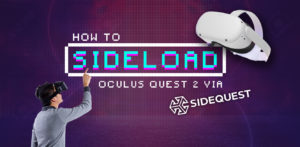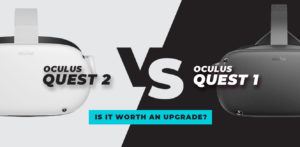John Carmack, a well-known programmer and formerly Oculus’ CTO, has a history of being forthright about his thoughts on the state of the XR sector. Although Carmack’s departure from Meta in December marked the end of a decade in VR, he continues to have a strong interest and influence in the field. Recently, he got to test out the Bigscreen Beyond, a sleek and lightweight virtual reality headset for PCs.
Unleashing the Power of Bigscreen Beyond SteamVR Headset with it’s Lightweight Design and Immersive Visuals
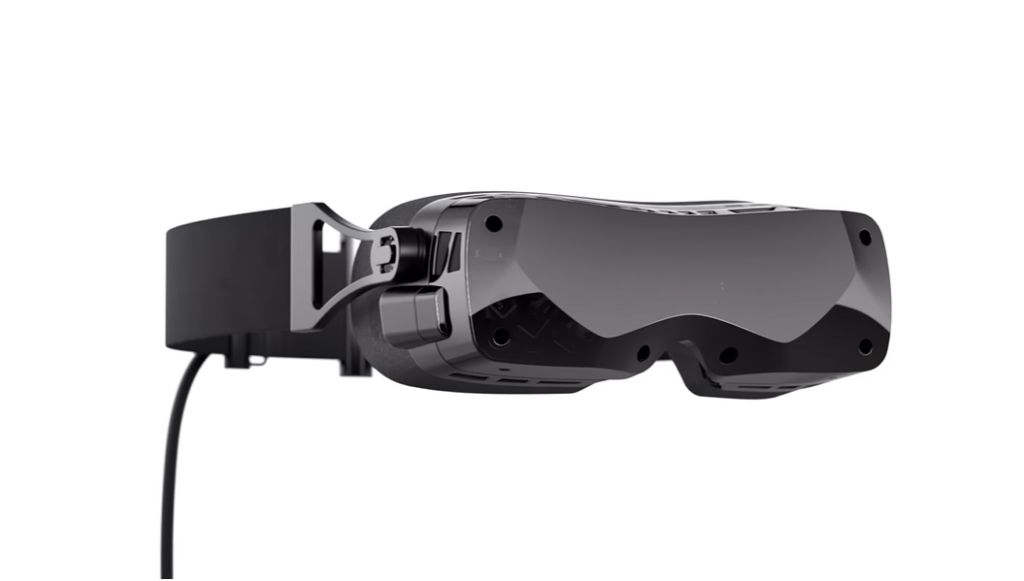
Photo from www.bigscreenvr.com
Using the SteamVR tracking standard, Bigscreen Beyond is a PC virtual reality headgear that must be attached to the computer. The headset costs $1,000 on its own, which makes it an interesting option for anyone who has already invested in the SteamVR hardware ecosystem. The headset’s small and light build, made possible with pancake lenses and micro-OLEDs, has won it a lot of praise. These capabilities include a refresh rate of 70 to 90 Hz and a resolution of 2,560 by 2,560 pixels per eye.
On Monday, John Carmack praised Bigscreen Beyond on Twitter, writing, “Bigscreen Beyond feels like a prop for a futuristic movie, but it works!” The lightest and most compact PC virtual reality headset. The fact that the co-founder and main programmer of id Software, the firm responsible for seminal ’90s 3D games like Wolfenstein 3D, Doom, and Quake, has given Oculus such glowing praise speaks volumes.
John Carmack’s Bigscreen Beyond VR Headset Review in Twitter
For your convenience, we have combined Carmack’s tweets about Bigscreen Beyond into one place below:
“Bigscreen Beyond feels like a prop for a futuristic movie, but it works! Far and away the smallest and lightest PC VR headset.”
“Thanks to the iPhone-based face scanning process before ordering, the fit is perfect, with zero light leaks. The custom printed facial interface is comfortable but not breathable, so it isn’t ideal for fitness activities.”
“The prescription lens inserts snap in with magnets and work well. The visuals are a trade-off compared to the Quest Pro. The resolution is higher, but there are more internal reflections in the pancake optics, and the quality deteriorates toward the edges. Some parts of the view look fantastic, good enough for actual productivity work, but not the entire view.”
“I sorely miss integrated audio. Having to fiddle with headphones significantly detracts from the headset’s minimalist feel. While I understand that some people have strong opinions, I still believe that Quest made the right decisions regarding audio.”
“The cable to the PC and the tracking base stations are the biggest downsides. The magic of standalone VR is real, and although some people willingly trade it for the raw power and flexibility of a PC, I wouldn’t recommend any PC VR setup as an entry point to VR.”
“For those considering an upgrade to a PC VR system, Bigscreen Beyond should be considered. I am delighted to see this intense focus on lightweight design, and I hope it influences Meta’s future designs.”
In a subsequent tweet, Carmack refers his followers to a review of Tested written by Adam Savage, which he says addresses most of his concerns. This review was conducted by Norman Chan after he had used a prototype for a month as his primary PC VR headset at work. In this video, Chan demonstrates photographs captured by the headset and talks about “the good, the bad, and the weird aspects of this unique approach to high-end bespoke VR,” as noted in the video’s description.
Adam Savage’s Tested – A Deep Dive on the Pros and Cons of Bigscreen Beyond
Here is a quick summary of what Chan covered in the Tested video broken down into pros and cons:
Bigscreen Beyond VR Headset Pros:
The Bigscreen Beyond headgear was commended by Tested’s Chan, who said it made him “love being in VR” and reignited his interest in virtual reality on a personal computer because of its clarity and comfort.
Bigscreen boasts that the Beyond headset’s display has a PPD (pixels per degree) resolution of 32, making it second only to the Varjo Aero.
Bigscreen Beyond’s microOLED technology allows for black levels that are deeper than those of the Meta Quest Pro’s miniLED illumination.
The Beyond headset’s lightweight design makes it more comfortable to wear for long periods than either the Quest 2 or Quest Pro headsets.
If the face scan is successful, the Beyond headset will be a perfect fit and the user’s field of view will be perfectly aligned.
Bigscreen Beyond VR Headset Cons:
Several flaws with the Bigscreen Beyond were discovered during testing, which could make some customers wary of spending $1,000 on the VR headset.
In addition to the pricey headset itself, users will need a powerful gaming PC with a graphics processing unit (GPU) capable of operating the Bigscreen Beyond’s high-resolution screens at a steady frame rate.
To support the high resolution of the individual eye displays, the PC must be capable of outputting at least 5K.
Additional costs of several hundred dollars are incurred if the user does not already own SteamVR base stations and controllers. Noting that PC VR usage is falling may make the purchase less tempting.
The Bigscreen Beyond’s OLED displays aren’t as brilliant as other VR headsets, but they do provide beautiful pictures and superb black levels. Sony’s PSVR 2 is the only VR system to use this innovation. According to Chan, the Bigscreen Beyond is prone to aberrations like doubling and ghosting in scenes with a lot of contrast.
Chan went on to explain, many gamers and VR users may already have much of the necessary equipment. However, a user’s face must be scanned using a FaceID-enabled iPhone. Even though half of all Americans already have one, the inconvenience of having to borrow an iPhone before making a purchase may deter some customers.
Bigscreen Beyond: Exploring the Details of this Cutting-Edge VR Headset
It’s not often that an app’s creator takes the risky step of creating custom hardware to best support the app. Arrival of Bigscreen! The Bigscreen beta app is well-known for facilitating the communal streaming of material in various 3D settings. The novel streaming infrastructure the firm developed allows for a fun and social virtual movie-going experience with pals.
Bigscreen, though, is not content to sit on its laurels. The last touches are being placed on the company’s virtual reality headset, which is scheduled for release in the third quarter of 2023. Even if the headset’s features and improvements are impressive, we can’t help but question if we’re waiting too long for its arrival. The whys need to be investigated!
Bigscreen Beyond VR Headset Review – The Tiniest Headset Ever
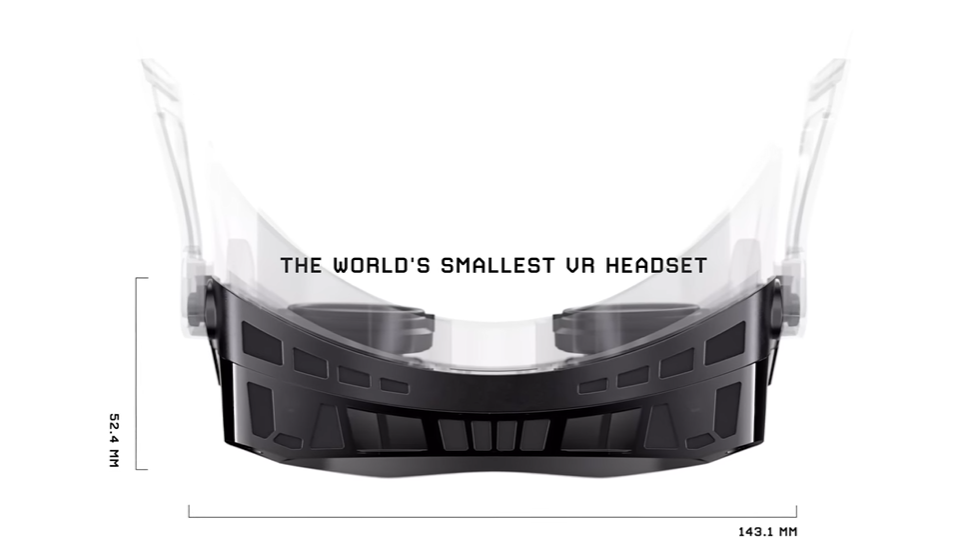
Photo from www.bigscreenvr.com
The new headset’s form factor is one of its most notable characteristics. By scanning the user’s face in 3D, each device is built specifically for them. Customers are led through a series of steps that yield highly detailed photographs of their faces. The end product is a lightweight, small headset designed specifically for the wearer’s head and face. There is no need for alterations, and neither excess padding nor light leakage is an issue. The included headset will fit securely on your head.
However, there are restrictions imposed by this form factor. Having a headset that fits properly is convenient, but it also means you have to keep it to yourself. This headset may prevent you from playing social games with your loved ones. Pupil distance and lens focus may not be in proper alignment for those who don’t have the same tailored fit. If numerous people will be using the headset, this restriction may cause potential consumers to look elsewhere.
For individuals who insist on group headset use, Bigscreen provides a workaround. They plan to make interchangeable face pads that can be removed with a simple snap. These cheek cushions have strong magnetic connections, so you may switch them out without worrying about breaking anything. We don’t yet know how much these extra bespoke face pads will cost, but given their bespoke nature they may not be cheap. In terms of cost, we’re crossing our fingers for a good surprise.
Most Powerful VR Headset in the Market
That’s right! Bigscreen Beyond will become the most powerful commercial headset available when it is released later this year. Thanks to its pancake OLED lenses, excellent resolution, and individual interpupillary distance (IPD) settings, this virtual reality headset bundle promises an experience unlike any other. From the looks of the excellent specs list, Bigscreen is aiming to create a new standard for high-quality virtual reality goggles.
Here are all the features and specs Bigscreen has officially announced:
Bigscreen Beyond VR Headset Features:
- Dual 1-inch OLED panels with more than 13.1 million pixels in an RGB-striped arrangement constitute microOLED displays. Each pixel measures 7.2 m in width, which is seven times smaller than the width of a human hair. In contrast to previous LCD-based VR headsets, which might suffer from screen door effects, muted colors, gray shadows, and motion blur, the newer OLED displays’ response times are measured in nanoseconds. Beyond is compatible with both 75Hz and 90Hz refresh rates.
- Next-Generation 3-Element Lenses made of Glass, Plastic Polymers, Films, and Coatings Offer Unparalleled Clarity in Custom Pancake Optics. When compared to traditional single-element Fresnel lenses, these lenses produce a smaller, lighter design with vastly superior optical clarity.
- 15 Different Sizes, Covering an Interpupillary Distance (IPD) Range of 58-72mm Beyond’s Fixed IPD Helps Keep Weight Down and Guarantees Proper Alignment of Your Eyes with The Optics, Bringing You Greater Comfort and Less Strain on Your Eyes.
- Important hardware that measures how far away the user’s face is from the headset is called a proximity sensor. As a result, the screens are only turned on when the headgear is in the correct position, making for a more secure and immersive virtual reality experience.
Is Bigscreen Beyond Headset Worth the Price?
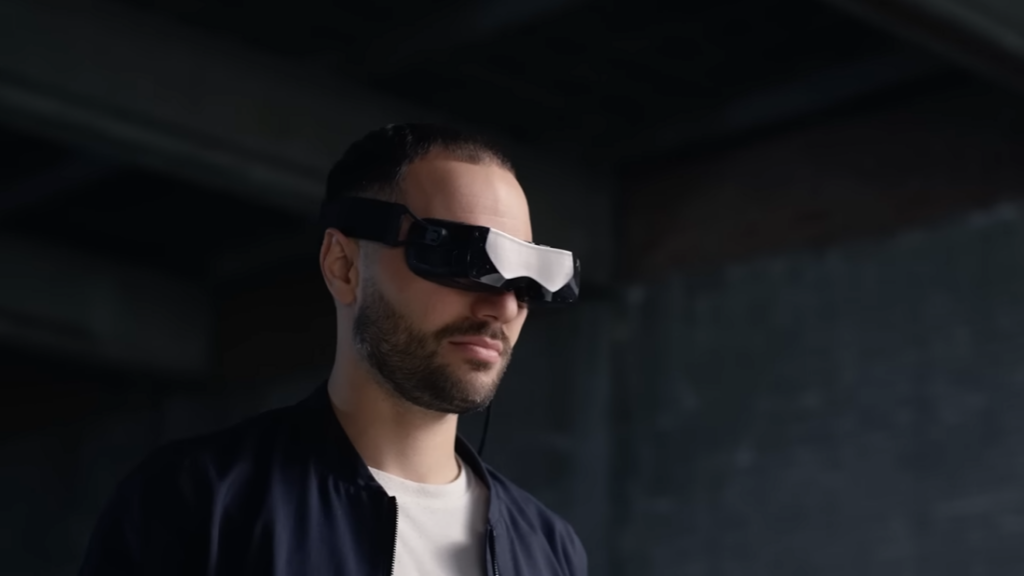
Photo from www.bigscreenvr.com
The price tag on the Bigscreen Beyond Headset with Custom Face Cushion, Soft Strap, 5 m of Fiber Optic Cable, the Link Box, and a cleaning cloth could put off some would-be consumers. The Bigscreen Beyond headgear starts at a steep $1,000. The Meta Quest 2 and the well-equipped PSVR2 both retail for less money than this. The soft head strap is all that’s included in the $1,000 starting price, which may not be sufficient for some people. It’s no secret that the Quest 2’s included head strap can get uncomfortable after a long session of gaming.
The audio strap, which costs an extra $100 but is comparable to the Vive’s adjustable headphones, is a more robust cushioned strap with built-in hanging headphone cups. Even with the reduced weight, some users may still experience discomfort after extended usage of the base unit, thus this purchase may be necessary.
The Bigscreen Beyond headset was skilfully designed and produced, with a fashionable semi-transparent exterior, from the concept design to early screenshots and finished product tech demos. It weighs just 170g, compared to 807g for comparable PC VR headsets like the Index, making it substantially more portable. To accommodate users who spend a long time in VR doing things like watching movies and chatting with friends on the company’s Bigscreen social VR theater software, the designers of Beyond prioritized keeping it as tiny and lightweight as possible. The maker also made sure that the headset has a high-quality microphone set.
Beyond’s $1,000 headgear (SteamVR Tracking base stations, audio straps, and controllers are sold separately) is aimed at serious PC VR fans. It’s worth noting that rival company Pimax is also working in this direction, with some key differences: Bigscreen focuses on portability and lightweight construction, while Pimax strives for a wide viewing angle and flexible construction. It appears that PC VR fans will continue to experience headset rivalry even as big businesses move their focus to standalone headsets. The good news for shoppers is that healthy competition exists.
If you want to read more about the features and specifications of the Bigscreen Beyond headset, check this out.
Overall Bigscreen Beyond VR Headset Review
In sum, the Bigscreen Beyond VR headgear is a stunning technological achievement that could significantly alter the way people interact with virtual reality. It offers a fantastic virtual reality experience because of its large viewing area, 6 degrees of freedom (DOF) tracking, high resolution, in-built spatial audio, custom-made face pad, and integrated social features.
The headset has not yet been made available to the public, but it is surely a product to watch in the coming months. We may have a winner on our hands if the business puts as much thought into the headset as it did into their software. Time will tell if Bigscreen Beyond becomes a hit in the VR market, but it may if people are prepared to spend more for better specifications.
Certainly, having the seal of approval from a high-profile leader of VR like John Carmack is a good place to start though.



